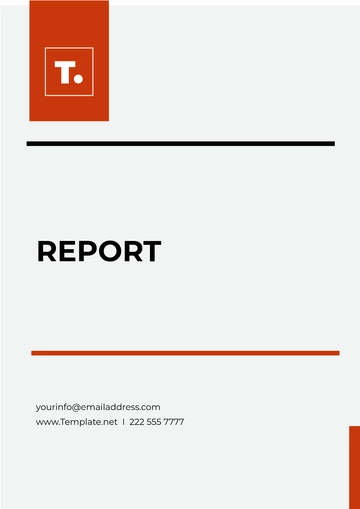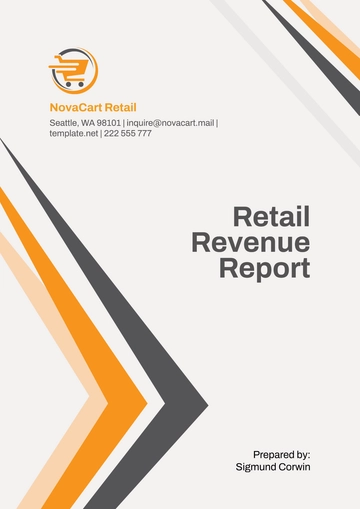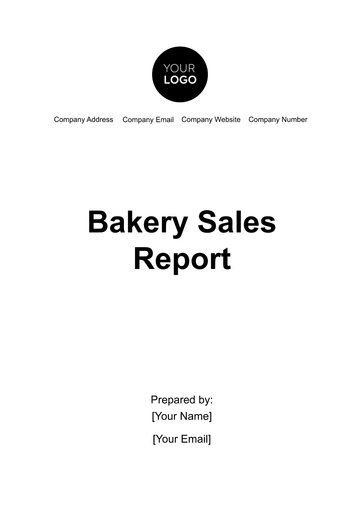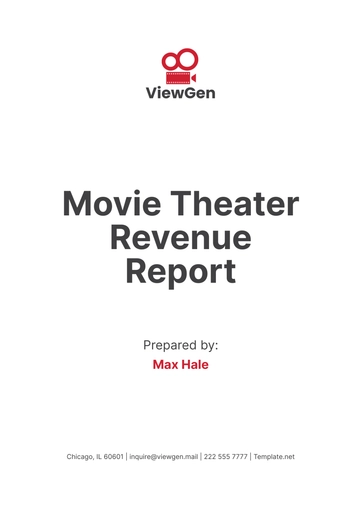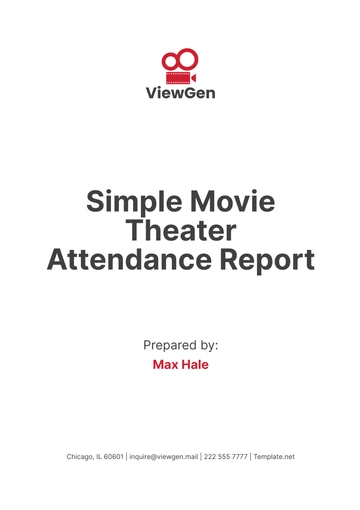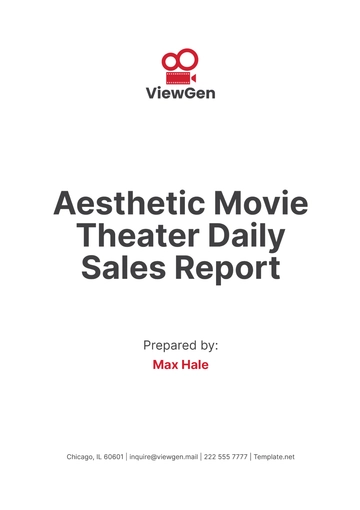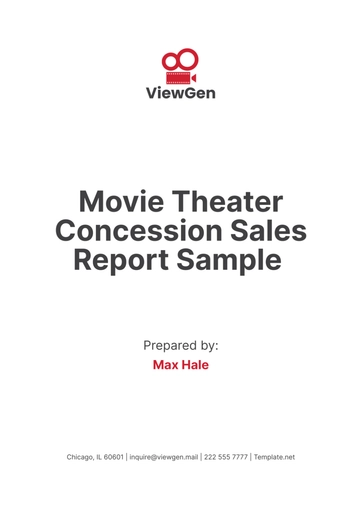Free Simple??Movie Theater Attendance Report
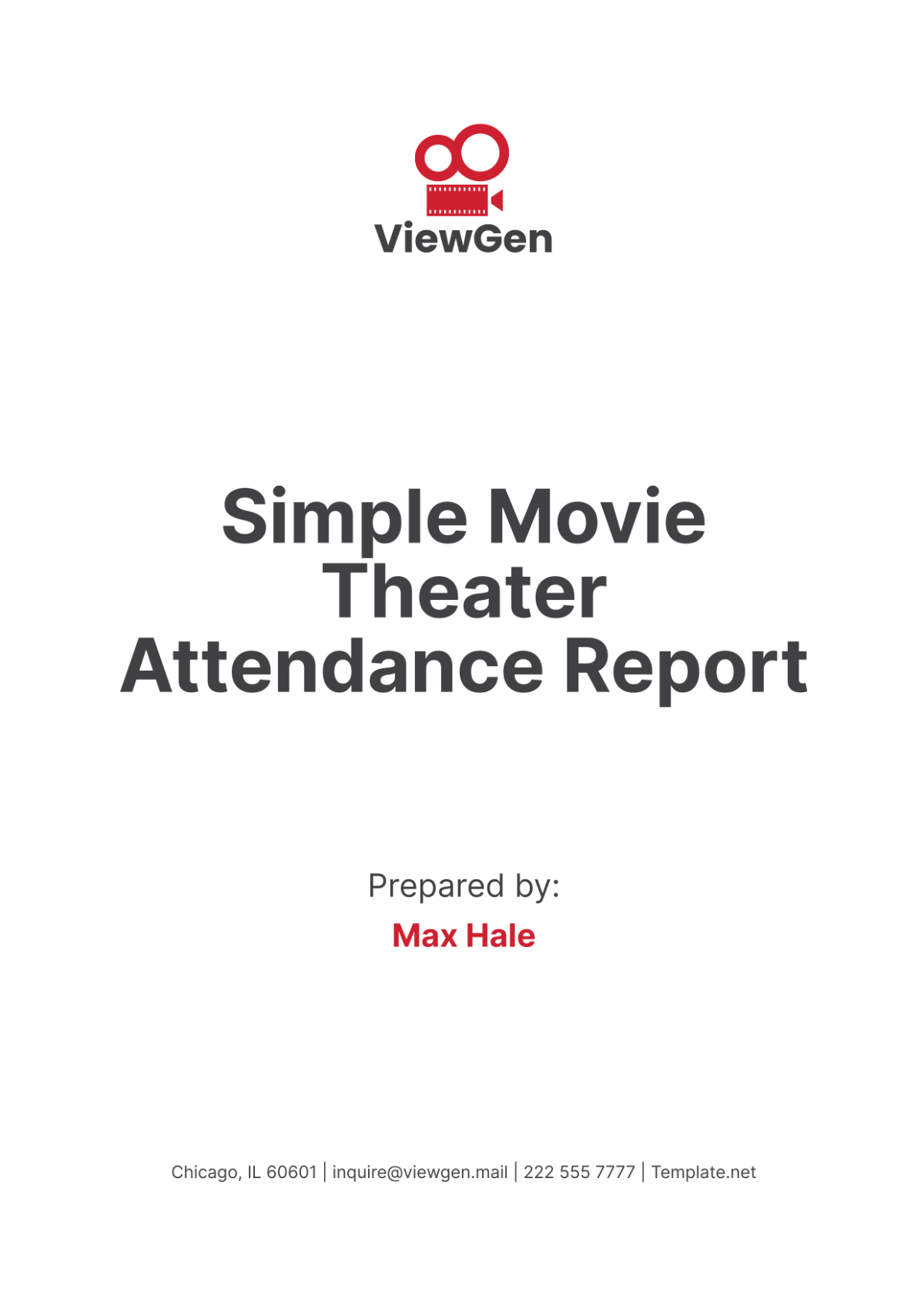
I. Executive Summary
A. Overview
This report provides an extensive analysis of the movie theater attendance for [Your Company Name] during June 2051. It encompasses detailed insights into daily and weekly attendance patterns, demographic breakdowns, popular movies, and comparative analyses with previous months and years. The findings are crucial for strategic decision-making to enhance operational efficiency and customer satisfaction.
B. Key Findings
Total Attendance: June 2050 witnessed a robust attendance of 45,000 moviegoers, marking a 5% increase from May 2050 and a notable 12% rise compared to April 2050.
Peak Attendance Days: Saturdays emerged as the peak attendance days, consistently drawing the highest number of viewers with an average of 2,500 attendees per Saturday.
Demographic Insights: The 18-34 age group constituted the largest segment, comprising 60% of the total attendance, indicating a strong appeal among young adults.
Popular Movies: "Galactic Odyssey" led the box office with 15,000 attendees, followed by "Underwater Secrets" and "The Last Frontier," each attracting significant crowds.
Attendance Trends: Evening showings, particularly between 6 PM and 9 PM, were the most popular, capturing 40% of the total monthly attendance.
II. Attendance Data
A. Daily Attendance
The daily attendance data for June 2050 reveals nuanced insights into viewership patterns across the month:
Date | Weekday | Attendance |
|---|---|---|
01-June-2050 | Monday | 1,200 |
02-June-2050 | Tuesday | 1,150 |
03-June-2050 | Wednesday | 1,300 |
04-June-2050 | Thursday | 1,400 |
05-June-2050 | Friday | 2,000 |
06-June-2050 | Saturday | 2,500 |
07-June-2050 | Sunday | 2,300 |
08-June-2050 | Monday | 1,250 |
09-June-2050 | Tuesday | 1,100 |
10-June-2050 | Wednesday | 1,350 |
11-June-2050 | Thursday | 1,450 |
12-June-2050 | Friday | 2,100 |
13-June-2050 | Saturday | 2,600 |
14-June-2050 | Sunday | 2,200 |
15-June-2050 | Monday | 1,300 |
16-June-2050 | Tuesday | 1,200 |
17-June-2050 | Wednesday | 1,400 |
18-June-2050 | Thursday | 1,500 |
19-June-2050 | Friday | 2,200 |
20-June-2050 | Saturday | 2,700 |
21-June-2050 | Sunday | 2,400 |
22-June-2050 | Monday | 1,350 |
23-June-2050 | Tuesday | 1,250 |
24-June-2050 | Wednesday | 1,450 |
25-June-2050 | Thursday | 1,550 |
26-June-2050 | Friday | 2,300 |
27-June-2050 | Saturday | 2,800 |
28-June-2050 | Sunday | 2,500 |
29-June-2050 | Monday | 1,000 |
30-June-2050 | Tuesday | 1,250 |
Analysis:
The month began with steady attendance figures, gradually building up momentum towards the weekends.
Saturdays consistently attracted the highest number of attendees, peaking at 2,800 on 27-June-2050.
Weekdays generally saw lower attendance, with Mondays and Tuesdays recording the lowest figures.
B. Weekly Attendance
Analyzing the weekly attendance breakdown provides a clearer picture of viewer trends throughout June 2050:
Week | Dates | Attendance |
|---|---|---|
Week 1 | 01-07 June 2050 | 11,850 |
Week 2 | 08-14 June 2050 | 10,900 |
Week 3 | 15-21 June 2050 | 10,500 |
Week 4 | 22-28 June 2050 | 10,750 |
Week 5 | 29-30 June 2050 | 1,000 |
Analysis:
Week 1 kicked off with strong attendance driven by new releases and promotional activities.
Week 3 saw a slight dip in attendance, possibly due to external factors like weather conditions or local events.
The final week of June had a lower attendance rate due to fewer operational days, covering only two days (29th and 30th).
III. Demographic Breakdown
A. Age Groups
Understanding the demographic composition of attendees helps in tailoring marketing strategies and programming decisions:
Age Group | Percentage | Number of Attendees |
|---|---|---|
Under 18 | 15% | 6,750 |
18-24 | 25% | 11,250 |
25-34 | 35% | 15,750 |
35-44 | 15% | 6,750 |
45-54 | 7% | 3,150 |
55+ | 3% | 1,350 |
Analysis:
The 18-34 age group continues to be the primary audience, constituting 60% of the total attendees.
Older demographics (45+) represent a smaller but significant portion of the audience, suggesting diverse movie preferences.
Understanding age group preferences aids in programming decisions and targeted marketing campaigns.
B. Gender Distribution
Examining the gender distribution provides insights into the theater's appeal across different demographics:
Gender | Percentage | Number of Attendees |
|---|---|---|
Male | 48% | 21,600 |
Female | 50% | 22,500 |
Non-binary/Other | 2% | 900 |
Analysis:
The audience is evenly split between male and female attendees, with females slightly outnumbering males.
Non-binary and other gender identities constitute a smaller yet important segment, reflecting the theater's inclusive atmosphere.
This balanced gender distribution indicates broad audience appeal and supports diverse programming strategies.
IV. Peak Viewing Times
Understanding peak viewing times helps optimize scheduling and resource allocation:
A. Time of Day
Analyzing attendance by time slots provides valuable insights into viewer preferences and habits:
Time Slot | Percentage | Number of Attendees |
|---|---|---|
Morning (10 AM - 12 PM) | 10% | 4,500 |
Afternoon (12 PM - 4 PM) | 20% | 9,000 |
Evening (4 PM - 8 PM) | 40% | 18,000 |
Night (8 PM - 12 AM) | 30% | 13,500 |
Analysis:
Evening shows remain the most popular, attracting 40% of the total monthly attendance, driven by post-work and weekend crowds.
Night shows also draw significant viewership, especially on weekends, indicating a preference for late-night entertainment.
Morning and afternoon slots, while less popular, cater to specific audience segments such as families and retirees.
B. Day of the Week
Analyzing attendance by day of the week reveals trends and patterns in viewer behavior:
Day | Percentage | Number of Attendees |
|---|---|---|
Monday | 7% | 3,150 |
Tuesday | 6% | 2,700 |
Wednesday | 8% | 3,600 |
Thursday | 9% | 4,050 |
Friday | 15% | 6,750 |
Saturday | 30% | 13,500 |
Sunday | 25% | 11,250 |
Analysis:
Saturdays consistently attract the highest attendance, accounting for 30% of the total weekly attendance, driven by new releases and weekend outings.
Fridays and Sundays also see robust attendance, with 15% and 25% respectively, reflecting moviegoers' leisure preferences.
Weekdays generally have lower attendance rates, with Mondays and Tuesdays recording the lowest figures, influenced by work and school schedules.
V. Comparative Analysis
Comparing attendance data across different time frames provides insights into growth trends and performance metrics:
A. Monthly Comparison
Analyzing attendance figures month-over-month helps identify seasonal trends and performance benchmarks:
Month | Attendance |
|---|---|
April 2050 | 40,000 |
May 2050 | 42,500 |
June 2050 | 45,000 |
Analysis:
June 2050 experienced a steady increase in attendance compared to April and May, with a notable 5% rise from May to June.
This growth can be attributed to effective promotional campaigns, compelling movie offerings, and favorable market conditions.
Understanding monthly variations aids in forecasting and strategic planning for future programming and marketing initiatives.
B. Yearly Comparison
Examining attendance trends year-over-year provides insights into long-term growth and audience engagement:
Year | Attendance |
|---|---|
June 2048 | 35,000 |
June 2049 | 40,000 |
June 2050 | 45,000 |
Analysis:
Attendance has steadily increased by 12% from April 2050 to June 2050, reflecting growing popularity and sustained audience interest.
The upward trend underscores [Your Company Name]'s effective management strategies, including programming diversity and customer engagement initiatives.
Long-term comparisons assist in benchmarking performance, identifying growth opportunities, and refining operational strategies to enhance profitability and customer satisfaction.
VI. Popular Movies
Identifying top-performing movies and genre preferences helps in optimizing movie programming and marketing efforts:
A. Top-Grossing Movies
Highlighting the top-performing movies based on attendance provides insights into audience preferences and box office success:
Movie Title | Attendance |
|---|---|
Galactic Odyssey | 15,000 |
Underwater Secrets | 10,000 |
The Last Frontier | 8,000 |
Dreamscape | 6,000 |
Time Warp | 6,000 |
Analysis:
"Galactic Odyssey" emerged as the top-grossing movie of June 2050, attracting a substantial audience of 15,000 moviegoers.
The success of "Underwater Secrets" and "The Last Frontier" further demonstrates audience preferences for adventure and sci-fi genres.
Analyzing movie performance informs future programming decisions, promotional strategies, and audience engagement initiatives.
B. Genre Preferences
Analyzing genre preferences helps in tailoring movie selections and marketing campaigns to maximize audience appeal:
Genre | Percentage | Number of Attendees |
|---|---|---|
Action | 30% | 13,500 |
Sci-Fi | 25% | 11,250 |
Drama | 20% | 9,000 |
Comedy | 15% | 6,750 |
Horror | 10% | 4,500 |
Analysis:
Action and sci-fi genres continue to dominate, collectively accounting for 55% of the total attendance in June 2050.
Drama and comedy genres appeal to a significant segment of the audience, underscoring the diversity of movie preferences.
Horror, while less popular, maintains a niche audience base, suggesting opportunities for targeted promotions and programming enhancements.
VII. Recommendations
Providing actionable recommendations based on insights to optimize operations, enhance customer experience, and drive business growth:
A. Operational Improvements
Identifying areas for operational enhancement to streamline processes and improve efficiency:
Enhanced Scheduling: Increase the frequency of evening and night shows to meet peak demand periods, particularly on weekends.
Staff Training: Implement comprehensive training programs to equip staff with enhanced customer service skills and operational efficiency.
Facility Upgrades: Invest in upgrading seating arrangements and audio-visual equipment to enhance overall viewing experiences and accommodate growing attendance.
B. Marketing Strategies
Developing targeted marketing strategies to attract and retain a diverse audience base:
Targeted Promotions: Launch targeted promotional campaigns aimed at the 18-34 age group, leveraging digital platforms and social media channels to drive engagement and ticket sales.
Genre-Specific Advertising: Tailor advertising efforts to highlight popular genres such as action and sci-fi, leveraging trailers, posters, and online ads to attract moviegoers with specific genre preferences.
Community Engagement: Foster community engagement through partnerships with local businesses, schools, and cultural organizations to promote special events, discounts, and exclusive screenings, enhancing [Your Company Name]'s presence and appeal within the community.
C. Customer Experience
Enhancing customer satisfaction and loyalty through personalized experiences and enhanced service offerings:
Feedback Systems: Implement robust feedback mechanisms, including post-movie surveys and online reviews, to gather insights into customer preferences, expectations, and satisfaction levels.
Loyalty Programs: Introduce customer loyalty programs offering rewards, exclusive perks, and personalized promotions to incentivize repeat visits and foster long-term patronage.
Special Events: Curate and promote special events such as movie marathons, themed nights, and celebrity appearances to create unique, memorable experiences for moviegoers and drive attendance during off-peak periods.
VIII. Conclusion
Summarizing the key findings and recommendations to drive [Your Company Name]'s growth, enhance operational efficiency, and elevate customer satisfaction:
This comprehensive report provides valuable insights into the movie theater attendance trends for June 2050 at [Your Company Name]. The analysis highlights robust attendance figures, demographic preferences, popular movie genres, and comparative performance metrics across different time frames. By leveraging these insights and implementing recommended strategies, [Your Company Name] can optimize its operations, enhance audience engagement, and sustain its position as a leading entertainment destination.
- 100% Customizable, free editor
- Access 1 Million+ Templates, photo’s & graphics
- Download or share as a template
- Click and replace photos, graphics, text, backgrounds
- Resize, crop, AI write & more
- Access advanced editor
Track attendance with the Simple Movie Theater Attendance Report Template on Template.net. This editable tool ensures accurate recording. Use our Ai Editor Tool to generate attendance reports, analyzing trends and optimizing scheduling in your movie theater.
You may also like
- Sales Report
- Daily Report
- Project Report
- Business Report
- Weekly Report
- Incident Report
- Annual Report
- Report Layout
- Report Design
- Progress Report
- Marketing Report
- Company Report
- Monthly Report
- Audit Report
- Status Report
- School Report
- Reports Hr
- Management Report
- Project Status Report
- Handover Report
- Health And Safety Report
- Restaurant Report
- Construction Report
- Research Report
- Evaluation Report
- Investigation Report
- Employee Report
- Advertising Report
- Weekly Status Report
- Project Management Report
- Finance Report
- Service Report
- Technical Report
- Meeting Report
- Quarterly Report
- Inspection Report
- Medical Report
- Test Report
- Summary Report
- Inventory Report
- Valuation Report
- Operations Report
- Payroll Report
- Training Report
- Job Report
- Case Report
- Performance Report
- Board Report
- Internal Audit Report
- Student Report
- Monthly Management Report
- Small Business Report
- Accident Report
- Call Center Report
- Activity Report
- IT and Software Report
- Internship Report
- Visit Report
- Product Report
- Book Report
- Property Report
- Recruitment Report
- University Report
- Event Report
- SEO Report
- Conference Report
- Narrative Report
- Nursing Home Report
- Preschool Report
- Call Report
- Customer Report
- Employee Incident Report
- Accomplishment Report
- Social Media Report
- Work From Home Report
- Security Report
- Damage Report
- Quality Report
- Internal Report
- Nurse Report
- Real Estate Report
- Hotel Report
- Equipment Report
- Credit Report
- Field Report
- Non Profit Report
- Maintenance Report
- News Report
- Survey Report
- Executive Report
- Law Firm Report
- Advertising Agency Report
- Interior Design Report
- Travel Agency Report
- Stock Report
- Salon Report
- Bug Report
- Workplace Report
- Action Report
- Investor Report
- Cleaning Services Report
- Consulting Report
- Freelancer Report
- Site Visit Report
- Trip Report
- Classroom Observation Report
- Vehicle Report
- Final Report
- Software Report
